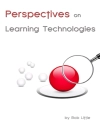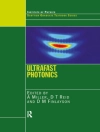Although formal analysis programming techniques may be quite
old, the introduction of formal methods only dates from the 1980s.
These techniques enable us to analyze the behavior of a software
application, described in a programming language. It took until the
end of the 1990s before formal methods or the B method could be
implemented in industrial applications or be usable in an
industrial setting.
Current literature only gives students and researchers very general
overviews of formal methods. The purpose of this book is to present
feedback from experience on the use of ‘formal methods’
(such as proof and model-checking) in industrial examples within
the transportation domain.
This book is based on the experience of people who are currently
involved in the creation and evaluation of safety critical system
software. The involvement of people from within the industry allows
us to avoid the usual problems of confidentiality which could arise
and thus enables us to supply new useful information (photos,
architecture plans, real examples, etc.).
Topics covered by the chapters of this book include SAET-METEOR,
the B method and B tools, model-based design using Simulink, the
Simulink design verifier proof tool, the implementation and
applications of SCADE (Safety Critical Application Development
Environment), GATe L: A V&V Platform for SCADE models and
Control Build.
Contents
1. From Classic Languages to Formal Methods, Jean-Louis
Boulanger.
2. Formal Method in the Railway Sector & #8232;the First Complex
Application: SAET-METEOR, Jean-Louis Boulanger.
3. The B Method and B Tools, Jean-Louis Boulanger.
4. Model-Based Design Using Simulink – Modeling, Code
Generation, Verification, and Validation, Mirko Conrad and Pieter
J. Mosterman.
5. Proving Global Properties with the Aid of the SIMULINK DESIGN
VERIFIER Proof Tool, Véronique Delebarre and
Jean-Frédéric Etienne.
6. SCADE: Implementation and Applications, Jean-Louis Camus.
7. GATe L: A V&V Platform for SCADE Models, Bruno Marre,
Benjamin Bianc, Patricia Mouy and Christophe Junke.
8. Control Build, a Development Framework & #8232;for Control
Engineering, Franck Corbier.
9. Conclusion, Jean-Louis Boulanger.
Tabela de Conteúdo
Chapter 1. From Classic Languages to Formal Methods1
Jean-Louis BOULANGER
1.1. Introduction 1
1.2. Classic development 2
1.3. Structured, semi-formal and/or formal methods 33
1.4. Formal methods 39
1.5. Conclusion 45
1.6. Bibliography 49
Chapter 2. Formal Method in the Railway Sector the First Complex Application: SAET-METEOR 55
Jean-Louis BOULANGER
2.1. Introduction 55
2.2. About SAET-METEOR 56
2.3. The supplier realization process 62
2.4. Process of verification and validation set up by RATP78
2.5. Assessment of the global approach 114
2.6. Conclusion 115
2.7. Appendix 116
2.8. Bibliography 122
Chapter 3. The B Method and B Tools 127
Jean-Louis BOULANGER
3.1. Introduction 127
3.2. The B method 128
3.3. Verification and validation (V&V) 137
3.4. B tools 141
3.5. Methodology 146
3.6. Feedback 150
3.7. Conclusion 155
3.8. Bibliography 155
Chapter 4. Model-Based Design Using Simulink -Modeling, Code Generation, Verification, and Validation159
Mirko CONRAD and Pieter J. MOSTERMAN
4.1. Introduction 159
4.2. Embedded software development using Model-Based Design162
4.3. Case study – an electronic throttle control system164
4.4. Verification and validation of models and generated code173
4.5. Compliance with safety standards 177
4.6. Conclusion 178
4.7. Bibliography 178
Chapter 5. Proving Global Properties with the Aid of the SIMULINK DESIGN VERIFIER Proof Tool 183
Véronique DELEBARRE and Jean-Frédéric ETIENNE
5.1. Introduction 183
5.2. Formal proof or verification method 184
5.3. Implementation of the SIMULINK DESIGN VERIFIER tool 193
5.4. Experience feedback and methodological aspects 211
5.5. Study case feedback and conclusions 218
5.6. Contributions of the methodology compared with the EN50128normative referential 220
5.7. Bibliography 222
Chapter 6. SCADE: Implementation and Applications225
Jean-Louis CAMUS
6.1. Introduction 225
6.2. Issues of embedded safety-critical software 225
6.3. Origins of SCADE 228
6.4. The SCADE data-flow language 231
6.5. Conclusion: extensions of languages for controllers anditerative processing 240
6.6. The SCADE system 246
6.7. Application of SCADE in the aeronautical industry 256
6.8 Application of SCADE in the rail industry 261
6.9. Application of SCADE in the nuclear and other industries265
6.10. Conclusion 269
6.11. Bibliography 270
Chapter 7. GATe L: A V&V Platform for SCADE Models273
Bruno MARRE, Benjamin BIANC, Patricia MOUY and Christophe JUNKE
7.1. Introduction 273
7.2. SCADE language 275
7.3. GATe L prerequisites 276
7.4. Assistance in the design of test selection strategies279
7.5. Performances 283
7.6. Conclusion 284
7.7. Bibliography 285
Chapter 8. Control Build, a Development Framework for Control Engineering 287
Franck CORBIER
8.1. Introduction 287
8.2. Development of the control system 289
8.3. Formalisms used 300
8.4. Safety arrangements 311
8.5. Examples of railway use cases 318
8.6. Conclusion 323
8.7. Bibliography 323
Chapter 9. Conclusion 325
Jean-Louis BOULANGER
9.1. Introduction 325
9.2. Problems 326
9.3. Summary 327
9.4. Implementing formal methods 332
9.5. Realization of a software application 337
9.6. Conclusion 339
9.7. Bibliography 340
Glossary 345
List of Authors 351
Index 353
Sobre o autor
Jean-Louis Boulanger is an Independent Safety Assessor (ISA) in the railway domain for software.












